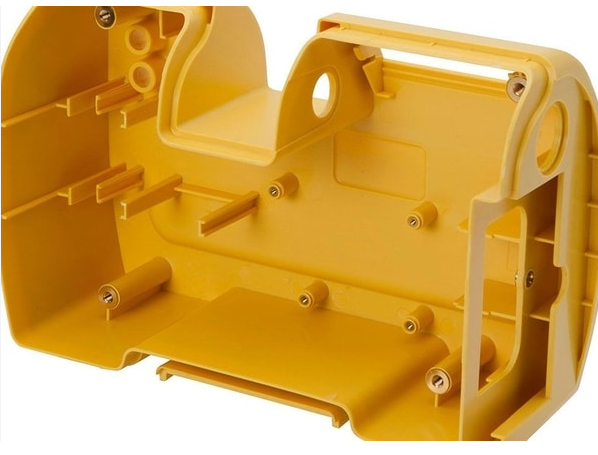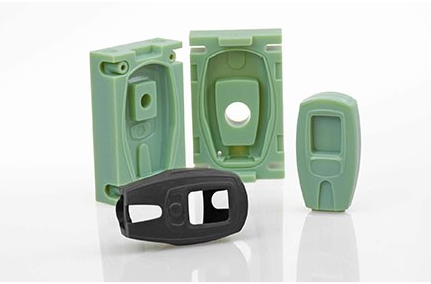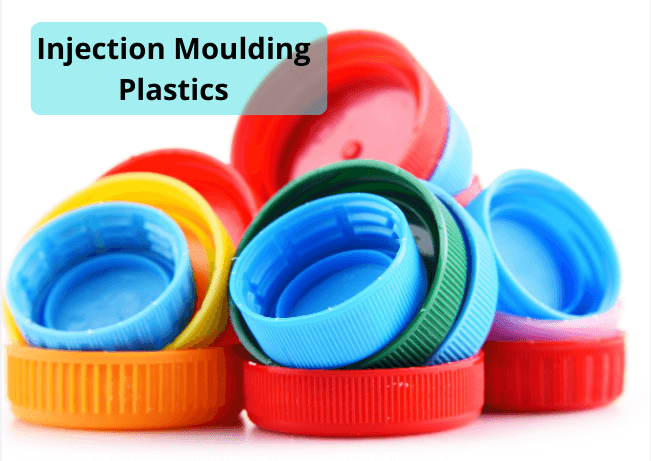The hardest plastic commonly used for injection molding is Polyether Ether Ketone (PEEK).
Identification of the Hardest Plastics in Injection Molding
In the realm of injection molding, identifying the hardest plastics is pivotal for applications requiring superior strength and durability.

Characteristics of High-Hardness Plastics
Resistance to Wear and Tear: Hard plastics exhibit exceptional resistance to abrasion and mechanical wear.
High Tensile Strength: These materials can withstand significant stress without deformation.
Low Flexibility: Hard plastics are typically less flexible, making them prone to brittleness under extreme force.
Chemical Resistance: They often possess excellent resistance to chemicals and solvents.
Heat Resistance: High-hardness plastics can maintain structural integrity at elevated temperatures.
Manufacturing Aspects:
Molding Temperature: Hard plastics often require higher molding temperatures.
Molding Pressure: Higher pressures are usually needed to fill mold cavities effectively.
Comparison of Hardness Levels in Different Plastics
| Plastic Type | Hardness Level | Typical Applications | Cost Implications |
|---|---|---|---|
| Polycarbonate (PC) | Very High | Bulletproof glass, eyewear | Higher cost due to material properties |
| Polyether Ether Ketone (PEEK) | Extremely High | Aerospace, medical implants | Premium price, used in specialized applications |
| Acrylonitrile Butadiene Styrene (ABS) | High | Automotive parts, protective equipment | Moderate cost, widely used |
| Nylon (Polyamide) | High to Very High | Gears, bearings | Cost varies with formulation |
| Ultra-High Molecular Weight Polyethylene (UHMWPE) | High | Orthopedic implants, industrial liners | Higher cost, specialized applications |
Efficiency and Production Speed:
Cycle Time: Hard plastics may have longer cycle times due to slower cooling and setting rates.
Energy Consumption: Higher energy requirements due to increased heating and pressure demands.
For more detailed information, explore Injection Molding Materials on Wikipedia.
Properties and Applications of the Hardest Injection Molding Plastics
Exploring the hardest plastics used in injection molding unveils a spectrum of unique physical and chemical properties, alongside a diverse range of industrial and commercial applications.
Physical and Chemical Properties
Polycarbonate (PC):
Properties: High impact strength, transparent, heat resistance up to 280°F (138°C).
Chemical Resistance: Resistant to weak acids but vulnerable to solvents.
Density: Approximately 1.2 g/cm³.
Polyether Ether Ketone (PEEK):
Properties: Exceptional thermal stability, high chemical and wear resistance.
Chemical Resistance: Unaffected by most acids and hydrocarbons.
Density: Around 1.3 g/cm³.
Acrylonitrile Butadiene Styrene (ABS):
Properties: Good toughness, impact resistance, and can be easily colored.
Chemical Resistance: Susceptible to strong acids and alkalis.
Density: About 1.04 g/cm³.
Nylon (Polyamide):
Properties: High mechanical strength, stiffness, and thermal resistance.
Chemical Resistance: Good resistance to fuels and oils.
Density: Ranges from 1.13 to 1.15 g/cm³.
Ultra-High Molecular Weight Polyethylene (UHMWPE):
Properties: Extremely high abrasion resistance, low friction, and high impact strength.
Chemical Resistance: Excellent resistance to chemicals.
Density: Typically 0.93 g/cm³.
Industrial and Commercial Applications
| Plastic Type | Applications | Cost and Manufacturing Considerations |
|---|---|---|
| Polycarbonate (PC) | Safety helmets, vehicle headlights, bulletproof glass | Higher molding temperatures, moderate cost |
| Polyether Ether Ketone (PEEK) | Aerospace components, medical implants, high-temperature engineering | Premium pricing, requires specialized molding equipment |
| Acrylonitrile Butadiene Styrene (ABS) | Automotive interior parts, protective gear, toys | Cost-effective, versatile in applications |
| Nylon (Polyamide) | Gears, automotive components, electrical insulation | Moderate cost, wide range of industrial uses |
| Ultra-High Molecular Weight Polyethylene (UHMWPE) | Orthopedic implants, industrial liners, food processing equipment | Higher cost, specialized in high wear and medical applications |
Production Efficiency:
Cycle Times: Varies depending on the material, with some requiring longer cooling times due to high melting points.
Energy Usage: Higher for materials needing elevated temperatures, impacting overall production costs.
For in-depth insights, visit Plastic Materials in Injection Molding on Wikipedia.
Manufacturing Process for Hard Plastics in Injection Molding
The manufacturing process for hard plastics in injection molding encompasses specific challenges and innovative techniques. It requires a blend of advanced technologies to effectively mold materials known for their high hardness and resilience.

Challenges in Molding High-Hardness Plastics
High Melting Points: Hard plastics like PEEK and PC have high melting points, necessitating specialized heating systems. For instance, PEEK melts around 662°F (350°C), demanding robust heating elements.
Increased Wear on Machinery: The abrasiveness of some hard plastics accelerates wear and tear on molds and machinery. This necessitates the use of hardened steel or specialized coatings for molds.
Precision in Molding: Achieving precise dimensions with hard plastics, especially for intricate designs, is challenging. Any errors in molding can lead to costly wastage.
Cooling and Curing Times: Longer cooling and curing times are needed due to the density and thermal properties of hard plastics, impacting overall production efficiency.
Cost Implications: The energy consumption for melting and maintaining the temperature of hard plastics is substantial, contributing to higher production costs.
Techniques and Technologies for Effective Molding
Advanced Temperature Control: Utilization of sophisticated temperature control systems ensures even heating and prevents material degradation.
High-Pressure Injection Systems: Implementing high-pressure injection systems that can effectively handle the viscosity of hard plastics. These systems ensure complete mold cavity filling and material consistency.
Precision Molding Equipment: Employing advanced molding machines equipped with precision controls to achieve the desired dimensional accuracy.
Enhanced Cooling Systems: Integration of advanced cooling systems to reduce cycle times while ensuring proper material setting.
Material Handling Innovations: Utilizing automated material handling systems to reduce manual intervention and improve efficiency.
Energy Efficiency:
Machines Used: Machines for hard plastics are typically rated between 30 kW to 60 kW, depending on the size and complexity of the parts being molded.
Energy Management: Implementing energy-efficient practices, such as using servo-driven hydraulic systems, helps to reduce the overall energy consumption.
For a detailed exploration of these processes and technologies, consider visiting Injection Molding of Plastics on Wikipedia.
Advantages and Limitations of Using Hard Plastics in Injection Molding
Incorporating hard plastics into injection molding processes comes with distinctive advantages in terms of durability and wear resistance.

Benefits in Durability and Wear Resistance
Superior Strength and Hardness: For example, Polycarbonate has a tensile strength of about 9,800 psi and a Rockwell Hardness of R 118.
High Wear Resistance: UHMWPE, with its molecular weight ranging from 3 to 6 million, shows exceptional abrasion resistance, outperforming steel by an average of 3 to 6 times in wear resistance tests.
Thermal Stability: PEEK can withstand continuous temperatures of up to 482°F (250°C) and has a melting point around 644°F (340°C).
Impact Resistance: ABS demonstrates good impact resistance, with an Izod impact strength of 7.5 – 17.5 kJ/m^2.
Longevity and Lifespan: Due to their high wear and impact resistance, hard plastics can extend the product lifespan significantly, often by several years compared to softer materials.
Considerations and Trade-offs in Manufacturing and Use
Processing Requirements: Hard plastics like PEEK require high processing temperatures, around 662°F (350°C), and high injection pressures up to 25,000 psi.
Material Costs: The cost of hard plastics like PEEK can be up to $100 per pound, significantly higher than common plastics like ABS, which costs around $1.50 to $2.50 per pound.
Cycle Time: Due to higher melting points and cooling rates, the cycle time can be longer. For example, PEEK has a cooling time that can be 50% – 100% longer than more common plastics.
Energy Consumption: The energy consumption for molding hard plastics can be substantial, with larger machines (capable of handling PEEK or PC) consuming between 30 kW to 60 kW per hour.
Design Constraints: The stiffness of hard plastics can limit design flexibility, particularly in creating complex geometries or thin-walled designs.
For more detailed data and information, visit Injection Molding Materials on Wikipedia.




